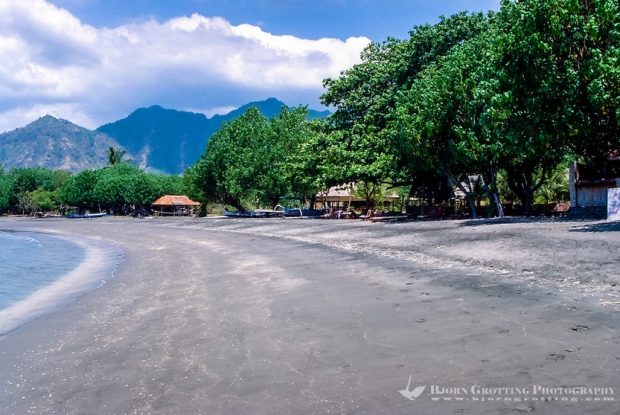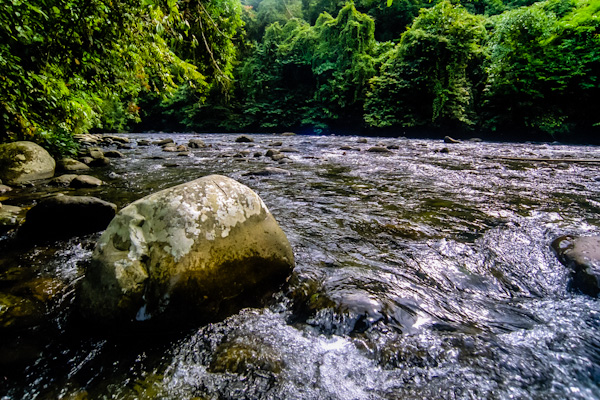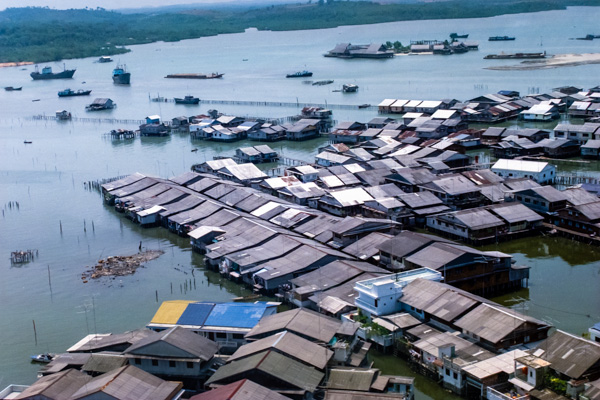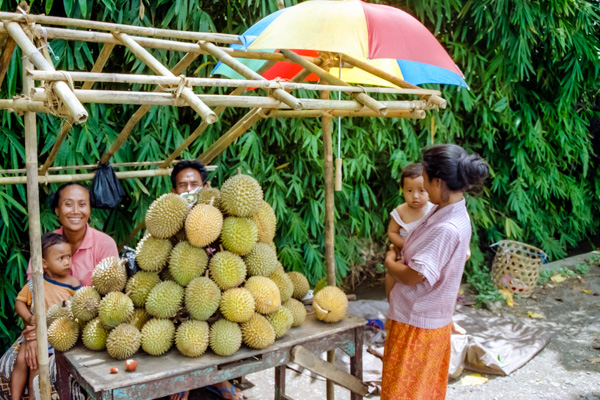Traditionally Gianyar has been the richest district on Bali, today about half the population here works in the tourist industry. Gianyar city is the administrative center of the district, while Ubud is the cultural capital and has the largest population.

Gianyar city is located about 23 km from Denpasar, and is a junction for north and east bound traffic. Around Bedulu, between the Petanu and Pakrisan rivers, is a 10 km long belt of land known as “the land between the rivers”.

This is home to some of Bali’s most sacred sites like Gunung Kawi, Tirta Empul, Goa Gajah and Yeh Pulu. All these monuments indicate that Gianyar was a mighty kingdom already one thousand years ago. However some Balinese, who do not have any knowledge of the pre-Hindu time, still believe that the old monuments were carved by the mythical giant Kebo Iwo.

According to legends large battles have taken place in this district between the gods and the evil king Mayadanawa of Bedulu. The details are written in the Balinese epic “Usana Bali” poem, originating from the 16th century. Tirta Empul was created by the god Indra in order to wake up dead warriors. The blood of the dead became the Petanu river (Petanu meaning “the cursed”), and for more than 1.000 years the water from the river was not used for drinking, bathing or irrigation of rice fields. A special ceremony in 1928 ended this curse, and the god’s victory over evil is celebrated every year during the Galungan festival.

For a period prior to the 18th century the Gianyar district was split between the Klungkung, Mengwi, Badung and Bangli kingdoms. At the end of the 18th century, after a defeat for the armies of Karangasem (see Amlapura), the king of Klungkung lost much of his influenc. The ruler of Gianyar city took advantage of this, and by war and deceit he became the ruler of a new large kingdom which also included neighboring states
. He took the name Dewa Manggis (“sweet God”) after the village in Klungkung where he was born.

Several wars followed between Dewa Manggis and his sons on one side and the other kingdoms on Bali. When facing defeat for the allied kingdoms of Klungkung, Badung and Bangli in 1880 they turned to the Dutch for assistance. The Dutch however was too busy with the war in Aceh, and Dewa Manggis and his family were taken prisoners. Two of the sons escaped from Klungkung in 1889 and reestablished their kingdom.

The Dutch colonial army finally arrived to protect Gianyar the next year, which practically meant a total annexation of Gianyar. In return Gianyar was spared when the Dutch fought to take control of the remaining southern Bali. The last king of Gianyar, Agung Ngurah Agung (1892-1960), ruled from 1912 till 1943, when the Japanese sent him in exile to Lombok. His son Anak Agung was an accomplished linguist who after the war served the Indonesian government as interior minister and later as ambassador to Belgium and France. From 1962 to 1966 he was put in jail by president Sukarno, under Suharto’s rule he became ambassador in Austria.

Even if Gianyar is only seven percent of Bali’s land area it is the most important region for cultural tourism, mainly because of Ubud and the big tourist attractions located in the district. About half of the population is involved in tourism, the other half mainly in agriculture. This is a center for a variety of crafts, like weaving of ikat (“endek” in Balinese), woodcarving and stone carving (see also Mas, Ubud, Batubulan and Tampaksiring).

In Gianyar city you can see the old palace, Puri Gianyar, which was saved due to Gianyar’s cooperation with the Dutch. It was destroyed during an earthquake in 1917 when Gunung Agung had a major eruption, and restored around 1920. This is one of the best maintained palaces on Bali. Descendants from the royal family still live inside, foreigners are normally not allowed to enter. The city has many shops were you can buy different crafts produced in the region. There are few hotels here, most visitors only stay here during a day visit.









